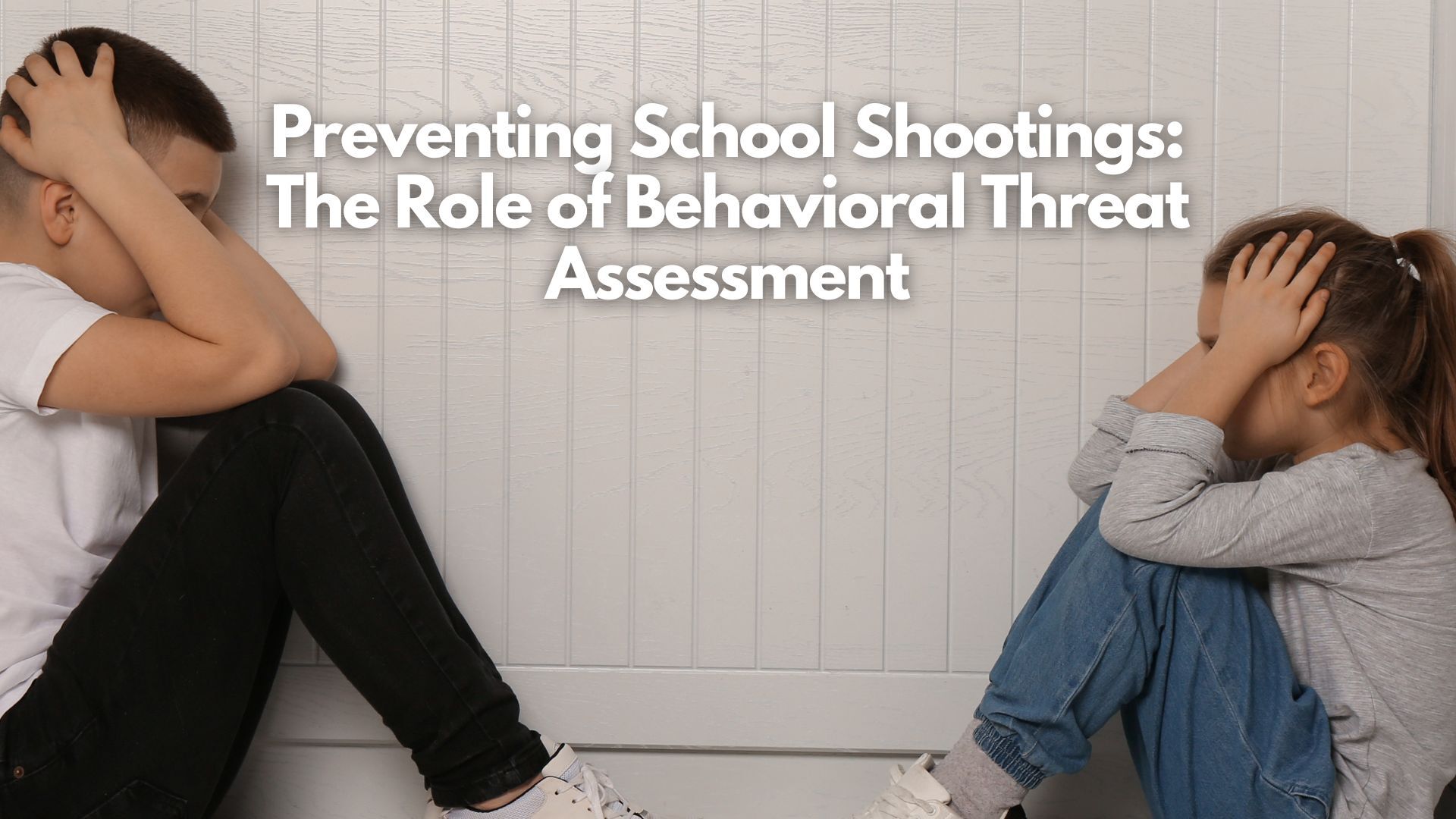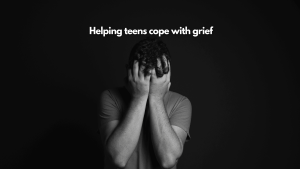School shootings are rare but devastating tragedies that leave communities in shock. While these incidents may seem unpredictable, research and experience show that most school shootings are preventable when the right intervention strategies are in place.
According to the National Center for Education Statistics, there were 93 school shootings with casualties at U.S. public and private schools during the 2020-2021 school year. This alarming number highlights the urgent need for proactive safety measures in schools.
One of the most effective ways to prevent targeted violence is through a Behavioral Threat Assessment (BTA)—a structured process that helps identify, assess, and manage potential threats before they escalate into violence.
We recently conducted a webinar,“How to Stop School Shootings: Is Your School Prepared?” where we explored the path to violence, real-life case studies, and proactive strategies to prevent attacks. If you want to dive deeper into this critical topic, you can watch the full webinar replay to learn how early intervention and proper threat assessments can stop violence before it happens.
What Is a Behavioral Threat Assessment?
A Behavioral Threat Assessment (BTA) is an evidence-based process used by schools and law enforcement to evaluate and manage threats before they lead to violence. Instead of relying on stereotypes or profiling, a BTA focuses on observable behaviors—real-time indicators that someone may be on a path to violence.
Key Characteristics of a BTA:
-
Uses standardized procedures to assess and manage threats.
-
Focuses on behaviors, not personal profiles, to reduce bias and false assumptions.
-
Encourages early intervention before a threat escalates into violence.
Why It Works
Research has shown that most school shooters exhibit warning behaviors before carrying out an attack. When schools implement a behavioral threat assessment program, they significantly increase their ability to intervene and prevent violence.
Recognizing the Warning Signs
Most school shootings follow a predictable pathway to violence, with warning behaviors appearing days, weeks, or even months before an attack. These behaviors include:
1. Social and Emotional Red Flags
-
Social withdrawal, isolation, or deep resentment.
-
Expressions of grievance—obsession with a perceived injustice.
-
Fascination with violence, weapons, or previous attacks.
-
Declining mental health, increased anxiety, depression, or suicidal thoughts.
2. Leakage of Violent Intentions
-
Threatening statements in conversations, social media, or personal writings.
-
Drawings, videos, or journal entries referencing violence or revenge.
-
Statements about feeling hopeless, wanting to “make people pay,” or admiration for past shooters.
3. Escalating Risk Behaviors
-
Unusual interest in firearms, explosives, or attack methods.
-
Researching or planning an attack (e.g., sketching school layouts, stockpiling weapons).
-
Sudden behavioral changes—becoming more aggressive, paranoid, or reckless.
These warning signs must be taken seriously. Schools should establish clear policies to identify and intervene early before violence escalates.
The Role of Schools and Educators
Educators and school staff are on the front lines of identifying and addressing concerning behaviors. A well-structured threat assessment program ensures that all staff members understand how to respond to potential threats.
Essential Steps for Schools:
1. Establish a Dedicated Threat Assessment Team
-
Assemble a multidisciplinary team (administrators, counselors, law enforcement, and teachers).
-
Train team members in identifying, evaluating, and managing threats.
2. Foster a Culture of Open Communication
-
Encourage students and staff to report suspicious behavior without fear of retaliation.
-
Use anonymous reporting tools, such as See Something, Say Something or text-to-tip programs.
3. Implement Clear Policies for Intervention
-
Ensure every threat is assessed and documented.
-
Search backpacks or belongings when suspicious behavior is reported.
-
Suspend access to weapons for individuals under assessment.
Example: In the Oxford High School shooting, multiple warning signs—including disturbing drawings, social media posts, and student reports—were ignored or dismissed. A proper threat assessment could have intervened and prevented the attack.
The Role of Parents and Students
-
Parents must actively monitor their child’s mental health and online activity.
-
Firearms at home should always be locked and secured.
-
Encourage students to report concerns to a trusted adult or school official.
Why Anonymous Reporting Matters
Students are often afraid of retaliation if they report a peer’s concerning behavior. That’s why schools should implement anonymous reporting systems where students can share tips safely.
Example: Schools that have implemented text-to-tip programs have successfully intervened in planned attacks because students felt comfortable reporting suspicious behavior.
Collaboration with Law Enforcement
Schools should work closely with law enforcement agencies to enhance safety measures.
Steps for Schools and Law Enforcement:
-
Develop joint training programs on threat assessment and emergency response.
-
Ensure School Resource Officers (SROs) are trained in violence prevention strategies.
-
Establish a clear process for escalating threats to law enforcement when necessary.
Some districts have partnered with law enforcement and mental health professionals to offer on-site crisis intervention, helping at-risk students before a crisis occurs.
How Schools Can Take Action Today
To effectively prevent school shootings, schools must implement a structured, proactive safety plan.
1. Build a Strong Threat Assessment Team
-
Train administrators, teachers, and counselors to recognize and report threats.
-
Involve law enforcement and mental health professionals in threat assessment planning.
2. Establish a Safe Reporting Culture
-
Create anonymous tip lines for students and staff.
-
Encourage open conversations about safety between students, parents, and educators.
3. Conduct Regular Training and Drills
-
Annual threat assessment training for all staff.
-
Run emergency response drills (lockdowns, evacuations) at least twice a year.
4. Strengthen Policies and Protocols
-
Ensure clear procedures for backpack searches, parent notification, and suspensions.
-
Review and update threat assessment policies annually.
5. Engage the Community
-
Host parent workshops on cyber safety, mental health, and firearm safety.
-
Strengthen partnerships with law enforcement and school resource officers.
Final Thoughts: Prevention is Possible
The good news is that school shootings are preventable when schools, parents, students, and law enforcement work together.
At Cyber Safety Cop, we specialize in Behavioral Threat Assessment Training for school districts. Our Investigative Threat Assessment Process (ITAP) teaches schools how to identify, assess, and manage threats effectively—moving beyond simple checklists to real prevention strategies.
-
If you’re a school administrator: Ensure your school has a structured threat assessment program in place.
-
If you’re an educator: Learn how to recognize warning behaviors and report concerns early.
-
If you’re a parent: Be involved in school safety discussions and talk to your child about reporting threats.
If you’d like to explore this topic further, we have additional resources to help you. Watch the full webinar replay, “How to Stop School Shootings: Is Your School Prepared?”—where we break down case studies, warning signs, and best practices for school safety.
Take Action to Protect Your School Today!
Don’t wait for a crisis—equip your school with the tools to identify, assess, and prevent threats before they escalate. Our Behavioral Threat Assessment Training empowers educators and administrators with the knowledge they need to keep students and staff safe.
Get started now—request a quote today: Cyber Safety Cop – Get a Quote
Together, we can stop school shootings before they happen and create a safer future for our schools.






